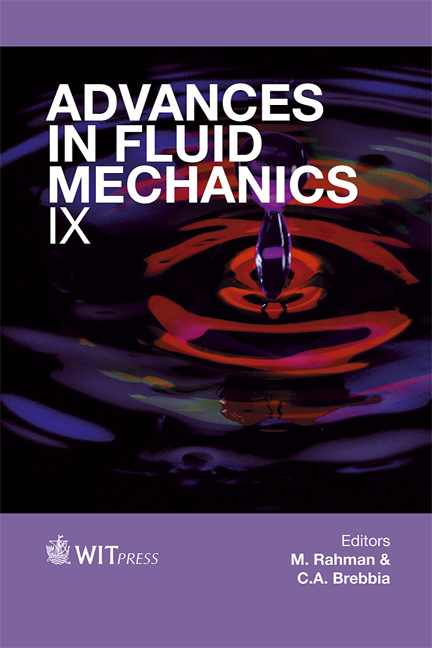On Radiation Absorption Effects And Air Humidity Influence On Evaporating Water Droplets And Vapour Condensation Intensity
Price
Free (open access)
Transaction
Volume
74
Pages
10
Page Range
189 - 198
Published
2012
Size
424 kb
Paper DOI
10.2495/AFM120171
Copyright
WIT Press
Author(s)
G. Miliauskas, S. Sinkunas & K. Sinkunas
Abstract
This paper discusses modelling of water droplet heating and evaporation in humid air. The effect of black body spectral radiation of the air temperature on the combined heat transfer in the water droplet has been evaluated. A combined analytical and numerical method of investigation is applied. Securing the balance of energy fluxes in the droplet with a confidence of one hundredth of a percent, the method of fastest descent has been used to determine the droplet surface temperature. Thermal state and phase transformation dynamics for the warming droplets heated in a humid air environment are modelled under conductive and combined conductive-radiative heating. Keywords: humid air, water droplet, combined heat and mass transfer, droplet heating and evaporation, condensation. 1 Introduction The research of water droplet heat and mass transfer is connected with application of sprayed water technology in power energy and other industries. The problem of droplet evaporation has been researched for more than a hundred years [1]. Demand to improve technology which employs liquids in the sprayed form requires further understanding of combined heat and mass transfer processes in liquid droplets under wide range of conditions. Applied methods for investigation of heat and mass transfer in liquid droplet are systematically reviewed in [2]. There has been an objective for particular consideration of unsteady combined heat and mass transfer processes in recent years [3–9]. The methods developed for analytical and numerical investigation of droplet combined heat and mass transfer allows modelling of more complex processes and their interactions.
Keywords
humid air, water droplet, combined heat and mass transfer, droplet heating and evaporation, condensation.





